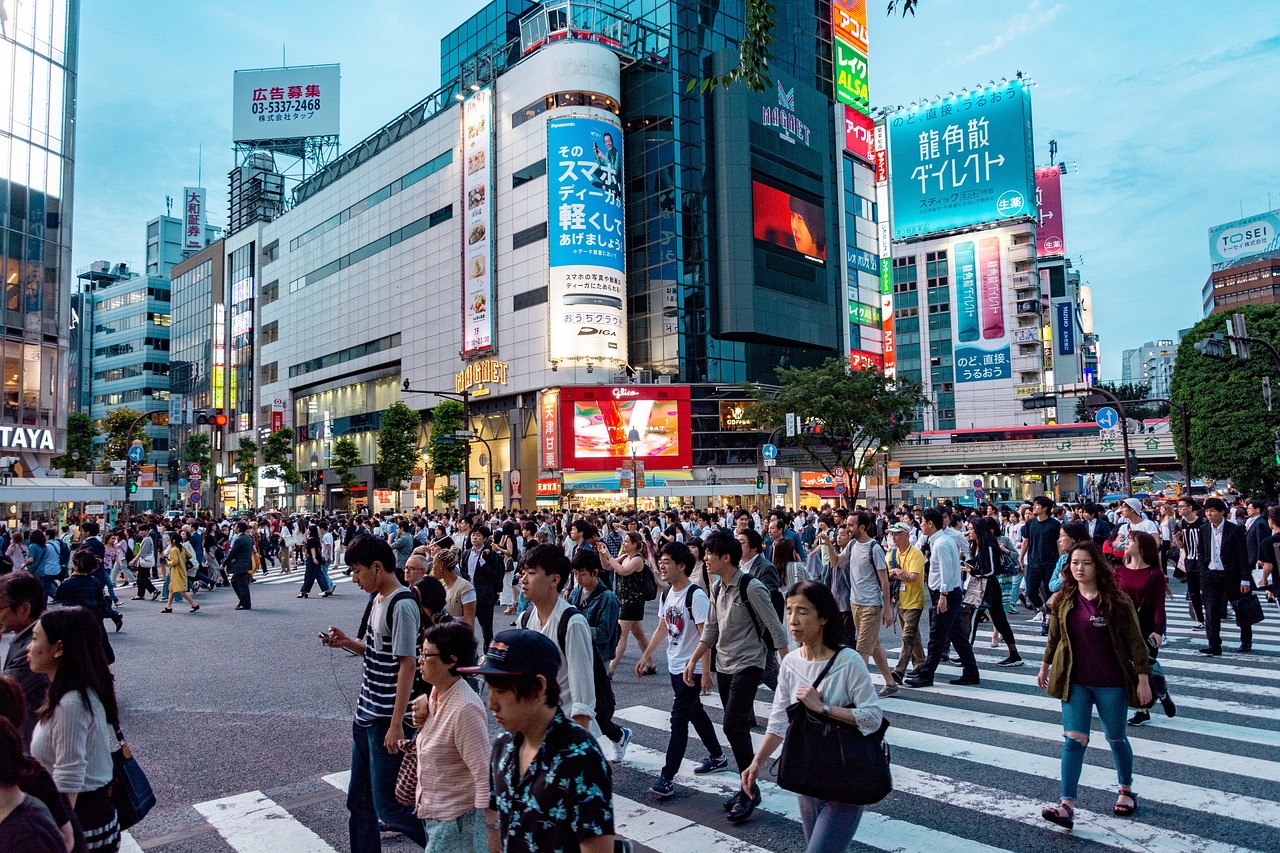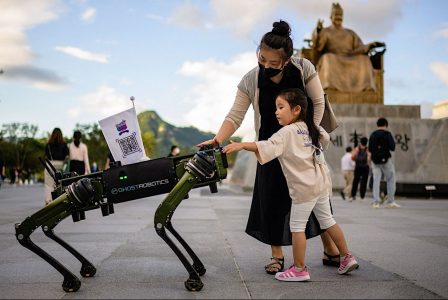 Pin
Pin Photo courtesy of Anthony Wallace / AFP
Something remarkable is happening across the globe right now. Machines are learning to think, robots are building cars without human hands, and algorithms are diagnosing diseases faster than doctors ever could. This isn’t some distant tomorrow—it’s today, and it’s unfolding at a pace that would make your head spin.
The question isn’t whether automation and artificial intelligence will change our world. They already have. The real question is: which countries are leading this charge? Some nations have invested billions into creating smart cities where traffic lights think for themselves. Others have built factories where robots outnumber people ten to one. A few have even developed AI systems that can predict economic trends before they happen. Understanding who’s ahead in this race tells us a lot about where humanity is headed, what jobs might look like in ten years, and which economies will dominate the coming decades. The top 11 countries with ai and automation aren’t just building technology—they’re building the future itself, one algorithm at a time.
So let’s take a walk through these technological powerhouses and see what makes them tick. You might be surprised by who made the list, and who didn’t.
Table of Contents
1. The United States – Silicon Valley's Global Playground
 Pin
Pin Photo courtesy of Silicon Valley/ Instagram
The United States didn’t stumble into its AI leadership by accident. It built it, nurtured it, and threw money at it like confetti at a parade. With tech giants like Google, Microsoft, and Tesla calling it home, America has become the testing ground for some of the wildest technological experiments on Earth. Self-driving cars cruise through California neighborhoods while AI chatbots handle customer service calls for millions of companies. The country pours over $50 billion annually into AI research alone, and that number keeps climbing. Universities churn out AI specialists faster than bakeries make donuts, and venture capitalists line up to fund the next breakthrough startup.
But here’s what makes America’s approach unique: it’s messy, competitive, and absolutely relentless. Unlike countries with centralized AI strategies, the U.S. lets thousands of companies duke it out in the marketplace. Some fail spectacularly. Others become worth billions overnight. This chaos breeds innovation at a breakneck pace. Walk into any major hospital and you’ll find AI systems reading X-rays. Visit a warehouse and robots zip around moving packages with ballet-like precision. The Pentagon even uses machine learning to analyze satellite imagery and predict security threats. From farms using drones to monitor crops to Wall Street algorithms trading stocks in microseconds, automation has woven itself into the American fabric so deeply that pulling it out would unravel the whole sweater.
2. China – The Dragon's Technological Awakening
 Pin
Pin Photo courtesy of Geo Travellers
China doesn’t just want to compete in the AI race. It wants to win it, and it’s not being subtle about those ambitions. The government announced a plan to become the world’s premier AI superpower by 2030, and they’re backing those words with a war chest that would make most countries jealous. Cities like Shenzhen and Beijing have transformed into sprawling laboratories where facial recognition software tracks millions of faces in real time, and smart traffic systems reduce congestion by predicting traffic patterns before jams even form. Chinese factories have embraced automation so enthusiastically that some production lines run entirely without human workers, humming along day and night under the watchful sensors of quality-control algorithms.
What sets China apart is scale and speed. When they decide to do something, they do it big and fast. Take their social credit system, which uses AI to monitor citizen behavior across multiple platforms. Or consider how quickly they deployed AI-powered temperature scanners during health crises, installing them in thousands of locations within weeks. Chinese tech companies like Baidu, Alibaba, and Tencent have developed AI platforms that rival anything coming out of Silicon Valley, powering everything from voice assistants to autonomous vehicles. They’re also investing heavily in AI chips and quantum computing, trying to break free from dependence on foreign technology. The country graduates more STEM students than any other nation, creating a massive talent pool hungry to push boundaries. Meanwhile, their Belt and Road Initiative spreads Chinese AI technology across Asia, Africa, and beyond, building influence one smart city project at a time.
3. Japan – Where Robots Became Family
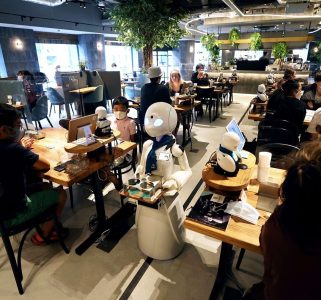 Pin
Pin Photo courtesy of TRT World
Japan has always had a peculiar relationship with robots, treating them less like tools and more like companions. This cultural quirk has given the country a massive head start in automation, especially in robotics. Walk through Tokyo and you’ll encounter robot receptionists greeting hotel guests, mechanical bartenders mixing cocktails with perfect precision, and android caregivers helping elderly patients with daily tasks. The country faces a demographic crisis—its population is aging faster than almost anywhere else—so they’ve turned to machines not out of choice but necessity. Factories across Japan have been using industrial robots since the 1980s, giving them decades of refinement that newer players simply can’t match. Companies like Fanuc, Sony, and SoftBank have created everything from assembly line arms to humanoid robots that can hold conversations and recognize emotions.
But Japan’s genius lies in making automation feel natural rather than threatening. Their robots often have cute, friendly designs that put people at ease. Pepper, the humanoid robot, greets customers in stores with a cheerful demeanor. Robotic exoskeletons help construction workers lift heavy materials without straining their backs. Even agriculture has gotten the automated treatment, with robotic strawberry pickers that can identify ripe fruit and harvest it gently. The government actively encourages this technological embrace, offering subsidies for companies that adopt automation and funding research into next-generation AI. They’re also pioneering “Society 5.0,” a vision where digital and physical spaces merge seamlessly through AI, creating cities that respond intelligently to human needs. Japan proves that automation doesn’t have to feel cold or dystopian—it can be warm, helpful, and surprisingly human.
4. South Korea – Speed, Connectivity, and Smart Everything
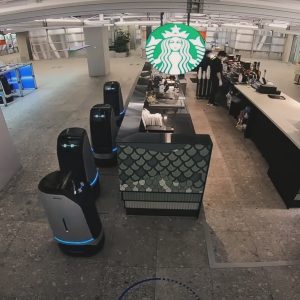 Pin
Pin Starbucks uses Robots for Coffee Delivery in South Korea / Photo courtesy of Starbucks
South Korea doesn’t do anything halfway, and their approach to AI and automation proves it. This small peninsula nation has built one of the most connected societies on Earth, with internet speeds that make most other countries look like they’re using dial-up. That infrastructure has become the backbone for an AI revolution that touches nearly every corner of Korean life. Samsung and LG, household names worldwide, pour enormous resources into developing AI-powered devices that learn user preferences and adapt accordingly. Korean homes feature smart refrigerators that track groceries and suggest recipes, while washing machines adjust their cycles based on fabric types without being told. The country has also become a manufacturing powerhouse where automation isn’t optional but essential, with electronics factories running complex assembly processes that require minimal human intervention.
The government has thrown its full weight behind becoming an AI leader, investing billions into research centers and offering tax breaks to companies developing automation technologies. Korean hospitals now use AI diagnostic tools that can spot diseases in medical images with accuracy that sometimes surpasses human doctors. Their education system has even integrated AI tutoring programs that personalize lessons for individual students, adjusting difficulty and pacing based on performance. Seoul itself has transformed into a living laboratory for smart city technology, with sensors monitoring everything from air quality to parking availability, feeding data into systems that optimize city services in real time. What makes South Korea particularly impressive is how quickly they’ve moved. Just two decades ago, they were still recovering from economic crisis. Now they’re building robots that compete in international competitions and developing autonomous ships that can navigate oceans without captains. Their combination of blazing-fast implementation and cultural acceptance of technology has created an environment where innovation doesn’t just happen—it races forward.
5. Germany – Engineering Precision Meets Digital Intelligence
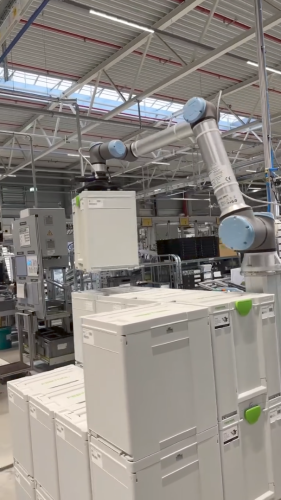 Pin
Pin Phot source: Internet
Germany built its reputation on engineering excellence, and now it’s applying that same meticulous precision to the digital age. The country pioneered “Industry 4.0,” a term that describes the integration of cyber-physical systems into manufacturing. German factories have become showcases of what happens when traditional craftsmanship meets cutting-edge automation. Automobile giants like BMW, Volkswagen, and Mercedes-Benz use collaborative robots that work alongside human employees, handling dangerous or repetitive tasks while people focus on complex problem-solving.
These aren’t your grandfather’s assembly lines anymore. Sensors embedded throughout production facilities collect mountains of data, which AI systems analyze to predict equipment failures before they happen, saving millions in downtime and repairs.
What makes Germany’s approach distinctive is their emphasis on quality over quantity. They’re not racing to automate everything overnight. Instead, they’re carefully integrating AI in ways that enhance rather than replace human expertise. The Mittelstand, Germany’s famous collection of small and medium-sized manufacturing companies, have embraced automation to stay competitive globally while maintaining their commitment to craftsmanship. Logistics companies use AI-powered route optimization that considers traffic, weather, and delivery windows simultaneously, making their supply chains remarkably efficient. German research institutions collaborate closely with industry, ensuring that academic breakthroughs quickly find practical applications. They’re also investing heavily in AI ethics and safety, wanting to lead not just in capability but in responsible development. From smart energy grids that balance renewable power sources to automated quality control systems that catch microscopic defects, Germany demonstrates that automation can coexist beautifully with tradition. Their methodical, thoughtful approach might not grab headlines like flashier competitors, but it’s building something sustainable and deeply integrated into their economic foundation.
6. United Kingdom – AI Research Meets Real-World Application
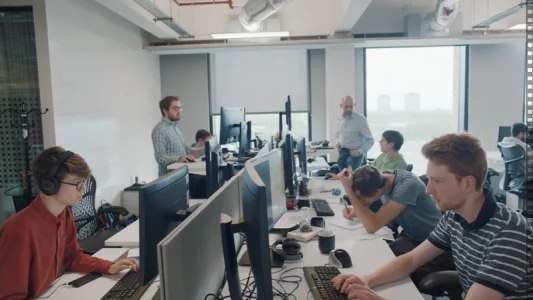 Pin
Pin Photo courtesy of Deepmind
The United Kingdom might have lost its empire, but it’s building a new kind of influence through artificial intelligence. London has emerged as Europe’s AI capital, hosting more AI companies than any other European city and attracting talent from across the globe. What gives the UK its edge isn’t just money or infrastructure—it’s the extraordinary concentration of world-class universities producing groundbreaking research. Oxford, Cambridge, Imperial College, and University College London consistently rank among the top AI research institutions globally, and their discoveries don’t gather dust in academic journals. They flow directly into startups and established companies hungry to turn theory into products. DeepMind, the AI research lab that created programs capable of beating world champions at complex games and predicting protein structures, calls London home and exemplifies this research-to-application pipeline.
The British approach blends academic rigor with entrepreneurial hustle in ways that feel distinctly different from both American and Asian models. The National Health Service, despite its challenges, has become a testing ground for AI medical applications on a scale few countries can match. Algorithms help radiologists spot cancers earlier, predict patient deterioration before it becomes critical, and optimize hospital staffing based on anticipated demand patterns. Financial services firms in London’s Square Mile use machine learning to detect fraud, assess credit risk, and execute trades with split-second timing. The government has designated AI as one of its “grand challenges,” committing substantial funding while also grappling seriously with questions about regulation, bias, and accountability. British researchers led efforts to make AI systems more explainable and trustworthy, recognizing that public acceptance matters as much as technical capability. This combination of cutting-edge research, practical deployment, and ethical consideration creates an ecosystem where innovation happens thoughtfully rather than recklessly.
7. Canada – The Quiet Innovator Up North
 Pin
Pin Geoffrey Hinton / Photo source Internet
Canada doesn’t shout about its AI achievements, but insiders know the country punches well above its weight. The story begins with a few visionary researchers who refused to abandon neural networks during the decades when most scientists dismissed them as dead ends. Geoffrey Hinton, often called the godfather of deep learning, worked at the University of Toronto during those lean years, quietly developing ideas that would eventually revolutionize the entire field. When AI finally exploded into mainstream consciousness, Canada suddenly found itself sitting on a goldmine of expertise and institutional knowledge. Montreal, Toronto, and Edmonton formed a triangle of AI excellence, each city developing distinct specialties while collaborating more than competing. The Vector Institute in Toronto and Mila in Montreal became magnets for researchers worldwide, creating vibrant communities where ideas cross-pollinate freely.
What makes Canada’s AI scene special is its collaborative spirit and commitment to beneficial AI development. The country has attracted major players—Google, Facebook, Microsoft, and Samsung all established significant AI research labs in Canadian cities, drawn by the talent pool and research environment. Yet Canada hasn’t let commercial interests completely dominate the conversation. Organizations like the Canadian Institute for Advanced Research actively promote discussions about AI ethics, fairness, and societal impact. Canadian researchers work on making AI systems more transparent and less biased, tackling problems that purely profit-driven research might overlook. The government supports this ecosystem with targeted funding and immigration policies that welcome AI talent from abroad. Industries from finance to natural resources are applying machine learning to everything from fraud detection to mineral exploration. Even sectors like agriculture benefit, with AI systems analyzing soil conditions and optimizing crop yields. Canada shows that you don’t need massive population or the biggest economy to lead in AI—you need smart investments, excellent education, and a culture that values both innovation and responsibility.
8. Singapore – The Tiny Nation With Massive Ambitions
 Pin
Pin Singapore AI Supermarket Fair Price Finest / Photo courtesy of Jolene Tan
Singapore has transformed itself from a small island with no natural resources into one of the world’s most technologically advanced nations, and AI sits at the heart of this ongoing metamorphosis. The government doesn’t just encourage automation—it orchestrates it with the kind of precision you’d expect from a place where even chewing gum sales were once regulated. Their Smart Nation initiative treats the entire country as a living laboratory, deploying sensors across the island that monitor everything you can think of. Traffic flows, energy consumption, waste management, even the cleanliness of public spaces gets tracked and optimized through AI systems that never sleep.
This level of integration would be impossible in larger countries with more complicated politics, but Singapore’s compact size and centralized decision-making turn potential obstacles into advantages.
The results speak louder than any marketing campaign ever could. Changi Airport uses facial recognition and automated systems so seamlessly that travelers barely notice they’re being processed by algorithms rather than people. The port, one of the busiest in the world, relies heavily on automated cranes and AI-powered logistics that coordinate thousands of container movements daily with remarkable efficiency. Healthcare facilities employ AI diagnostic tools that help doctors catch diseases earlier and plan treatments more effectively. Even urban planning benefits, with simulations predicting how new buildings will affect wind patterns, traffic, and neighborhood dynamics before construction begins. Singapore has also positioned itself as a regional AI hub, attracting companies and researchers with generous grants, excellent infrastructure, and a business-friendly environment. Universities collaborate closely with industry, ensuring graduates emerge with skills that match market needs. What Singapore demonstrates beautifully is that size doesn’t determine technological leadership—vision, execution, and willingness to embrace change do. This tiny nation has become a giant in the AI world simply by being smarter, faster, and more adaptable than places many times its size.
9. Israel – Innovation Born From Necessity
Israel has earned its nickname as the “Startup Nation,” and nowhere is this more evident than in AI and automation technologies. The country’s unique circumstances have shaped its technological prowess in ways that feel almost paradoxical. Mandatory military service funnels young talent through elite intelligence and technology units where they work on cutting-edge problems with real consequences. When these soldiers complete their service, many launch startups or join tech companies, bringing with them skills and networks that would take years to develop elsewhere. This pipeline has created an ecosystem where eighteen-year-olds might be analyzing satellite imagery with machine learning algorithms, then founding companies based on those experiences by age twenty-three. The density of AI talent relative to population size is staggering—Israel has more startups per capita than any other country, and a huge proportion work on automation, computer vision, and machine learning applications.
But Israeli innovation isn’t just about military spinoffs or startup culture. The country faces genuine challenges that demand technological solutions. Water scarcity pushed them to develop AI-powered agricultural systems that maximize crop yields while minimizing resource use, technologies now exported worldwide. Security concerns drove advances in facial recognition, behavioral analysis, and predictive algorithms that can spot anomalies in massive data streams. Companies like Mobileye, which pioneered autonomous vehicle technology, emerged from asking hard questions about road safety and finding answers in computer vision. Israeli universities punch well above their weight in AI research, while government programs actively connect academia with industry and military needs. The result is a tight feedback loop where research addresses real problems, solutions get tested immediately, and successful innovations scale rapidly. Tel Aviv has become a magnet for international tech giants opening research centers, recognizing that Israeli engineers bring a unique combination of technical skill, creative thinking, and comfort with high-stakes problem-solving that’s difficult to find elsewhere concentrated so densely.
10. Sweden – Where Welfare Meets Algorithms
Sweden has quietly become one of Europe’s most automated societies, and the transformation happened so smoothly that many Swedes barely noticed it occurring. The country’s combination of high labor costs, strong social safety nets, and cultural openness to change created perfect conditions for automation to flourish without the social friction that plagues other nations. Swedish companies adopted industrial robots earlier and more extensively than most European competitors, recognizing that automation could help them stay competitive despite expensive wages. But rather than sparking mass unemployment fears, this shift occurred within a framework where displaced workers received retraining support and generous unemployment benefits, making the transition less terrifying than it might have been elsewhere. Companies like ABB became global leaders in robotics, while Spotify demonstrated how AI could revolutionize music recommendations and content discovery.
The Swedish model shows something important about automation that often gets lost in heated debates about job displacement. Stockholm has emerged as a significant tech hub, hosting numerous AI startups focused on everything from healthcare diagnostics to climate modeling. The government invests heavily in digital infrastructure, ensuring even remote areas have connectivity that supports AI applications. Swedish hospitals use machine learning to optimize treatment protocols and predict patient outcomes, while manufacturing facilities employ collaborative robots that work safely beside human employees. What makes Sweden particularly interesting is how they’ve integrated automation while maintaining strong social cohesion and quality of life. They’re not racing to automate simply because they can—they’re doing it thoughtfully, with attention to how technology affects communities and individuals. Education systems prepare students for an automated future without creating panic about obsolescence. Labor unions actively participate in discussions about workplace automation rather than reflexively opposing it. This pragmatic, inclusive approach demonstrates that automation doesn’t have to mean choosing between economic competitiveness and social stability. Sweden suggests you can have both if you plan carefully and bring everyone along for the ride.
11. France – Digital Renaissance in the City of Light
France approached the AI revolution with characteristic French flair—a mixture of intellectual ambition, state coordination, and determination not to let Anglo-Saxon tech giants dominate the future. President Macron declared AI a national priority and backed those words with a €1.5 billion investment plan, signaling that France intended to compete seriously on the global stage. Paris has transformed into a genuine tech hub, attracting talent that might once have fled to London or Silicon Valley. The French possess deep strengths in mathematics and theoretical computer science, producing researchers whose work underpins many modern AI breakthroughs even if the companies commercializing those ideas often sit elsewhere. This academic excellence, combined with renewed government support and a growing startup ecosystem, has created momentum that feels genuinely exciting rather than forced.
French companies and institutions are applying AI across surprisingly diverse domains. Luxury brands use machine learning to predict fashion trends and optimize supply chains while maintaining the human craftsmanship that defines their appeal. Agricultural cooperatives employ computer vision systems to monitor crop health across France’s vast farmlands. The transportation sector has embraced automation enthusiastically, with companies developing autonomous vehicle technology and AI systems that manage rail networks with impressive efficiency. French researchers also contribute significantly to debates about AI ethics and regulation, bringing philosophical depth to discussions that sometimes feel purely technical elsewhere. The European Union’s approach to AI regulation bears strong French influence, emphasizing human rights and democratic values alongside innovation. What emerges is a distinctly French vision of automation—one that values intellectual rigor, questions purely market-driven development, and insists that technology should serve humanistic goals rather than the reverse. France demonstrates that even countries that initially seemed to lag behind the AI leaders can catch up quickly when they commit resources, leverage existing strengths, and offer a compelling alternative vision for how artificial intelligence should develop and integrate into society.
FAQs
The United States leads global AI spending with over $50 billion invested annually in research and development. China follows closely with massive government-backed initiatives targeting AI supremacy by 2030.
Japan’s rapidly aging population created urgent need for automation. With fewer young workers available, robots fill gaps in manufacturing, healthcare, and service industries while cultural acceptance makes integration smoother.
Absolutely! Singapore, Israel, and Sweden prove that smart investments, excellent education systems, and focused strategies can create AI leadership regardless of country size. Specialized expertise often beats pure scale.
Effects vary widely. Countries like Sweden with strong social safety nets experience smoother transitions, while others face more disruption. Most leaders invest heavily in retraining programs to help workers adapt to changing job markets.
Success requires combining several elements: strong education producing skilled workers, government support through funding and smart policies, business investment in research, and cultural willingness to embrace technological change rather than resist it.











